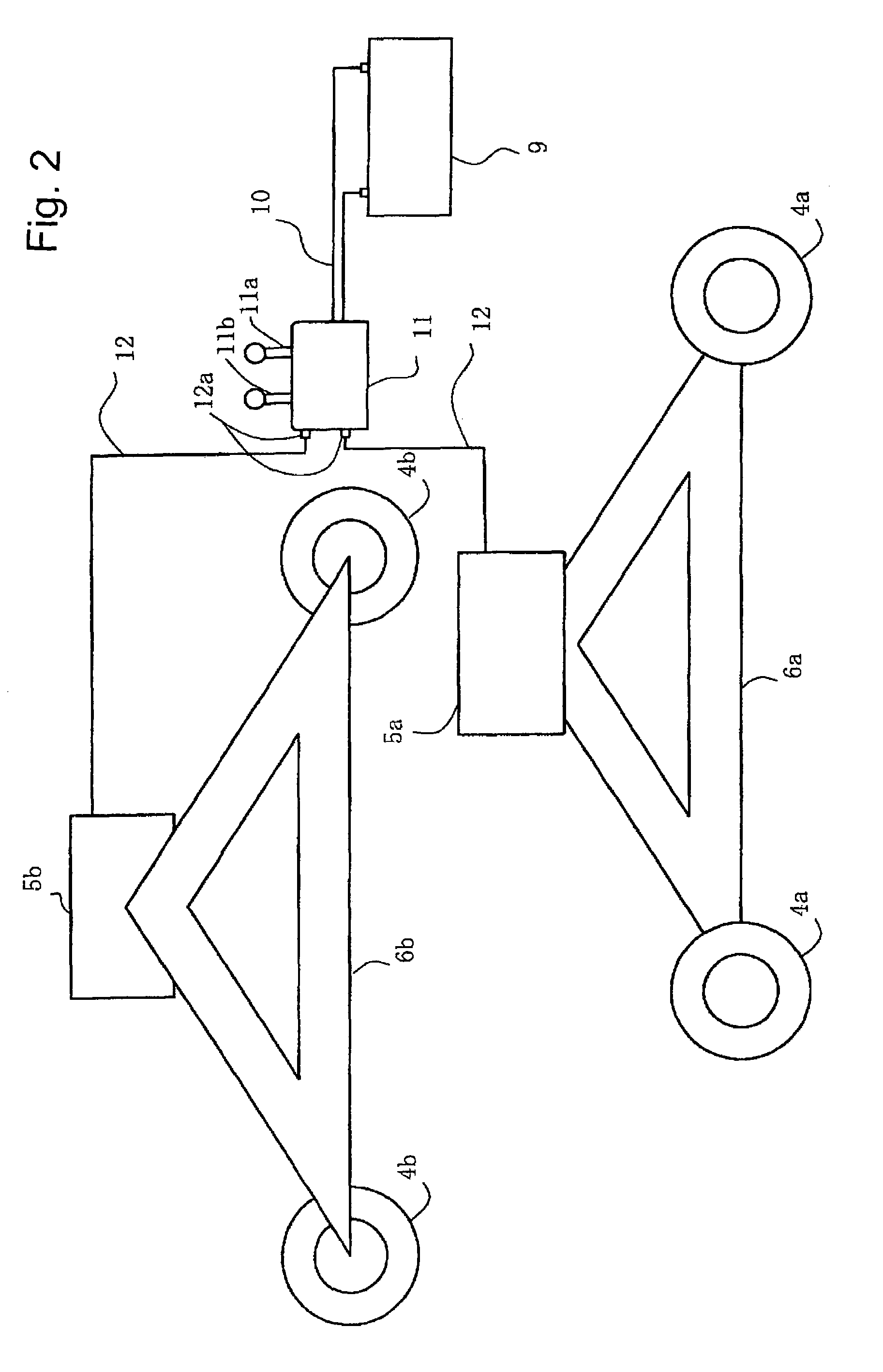Self-propelled platform for watercraft
a self-propelled platform and watercraft technology, applied in the field of self-propelled platforms, can solve the problems of troublesome carrying operation, high mooring rental, and high labor and manpower on the seabed, and achieve the effect of facilitating loading and unloading and more stably running on the seabed
- Summary
- Abstract
- Description
- Claims
- Application Information
AI Technical Summary
Benefits of technology
Problems solved by technology
Method used
Image
Examples
Embodiment Construction
[0030]A self-propelled platform according to an embodiment of the present invention will be described below with reference to FIGS. 1 to 8.
[0031]FIG. 1 is an outside view of a self-propelled platform according to this embodiment.
[0032]Referring to FIG. 1, a self-propelled platform 1 of this embodiment includes a main frame 2 that is provided with four mounts 3 for supporting the bottom of a watercraft, and two pairs of wheels 4a and 4b are longitudinally arranged under the main frame 2. Motors 5a and 5b are respectively connected to the two pairs of wheels 4a and 4b via triangular connecting bars 6a and 6b and cranks 6c and 6d. Floats 7a and 7b connected to float shafts 8a and 8b are provided between the motors 5a and 5b and the two pairs of wheels 4a and 4b.
[0033]In this embodiment, the self-propelled platform 1 can run on land with the body of a watercraft placed on the mounts 3 by transmitting power to the cranks 6c and 6d by the rotation of the motors 5a and 5b, and turning the...
PUM
 Login to View More
Login to View More Abstract
Description
Claims
Application Information
 Login to View More
Login to View More - R&D
- Intellectual Property
- Life Sciences
- Materials
- Tech Scout
- Unparalleled Data Quality
- Higher Quality Content
- 60% Fewer Hallucinations
Browse by: Latest US Patents, China's latest patents, Technical Efficacy Thesaurus, Application Domain, Technology Topic, Popular Technical Reports.
© 2025 PatSnap. All rights reserved.Legal|Privacy policy|Modern Slavery Act Transparency Statement|Sitemap|About US| Contact US: help@patsnap.com



